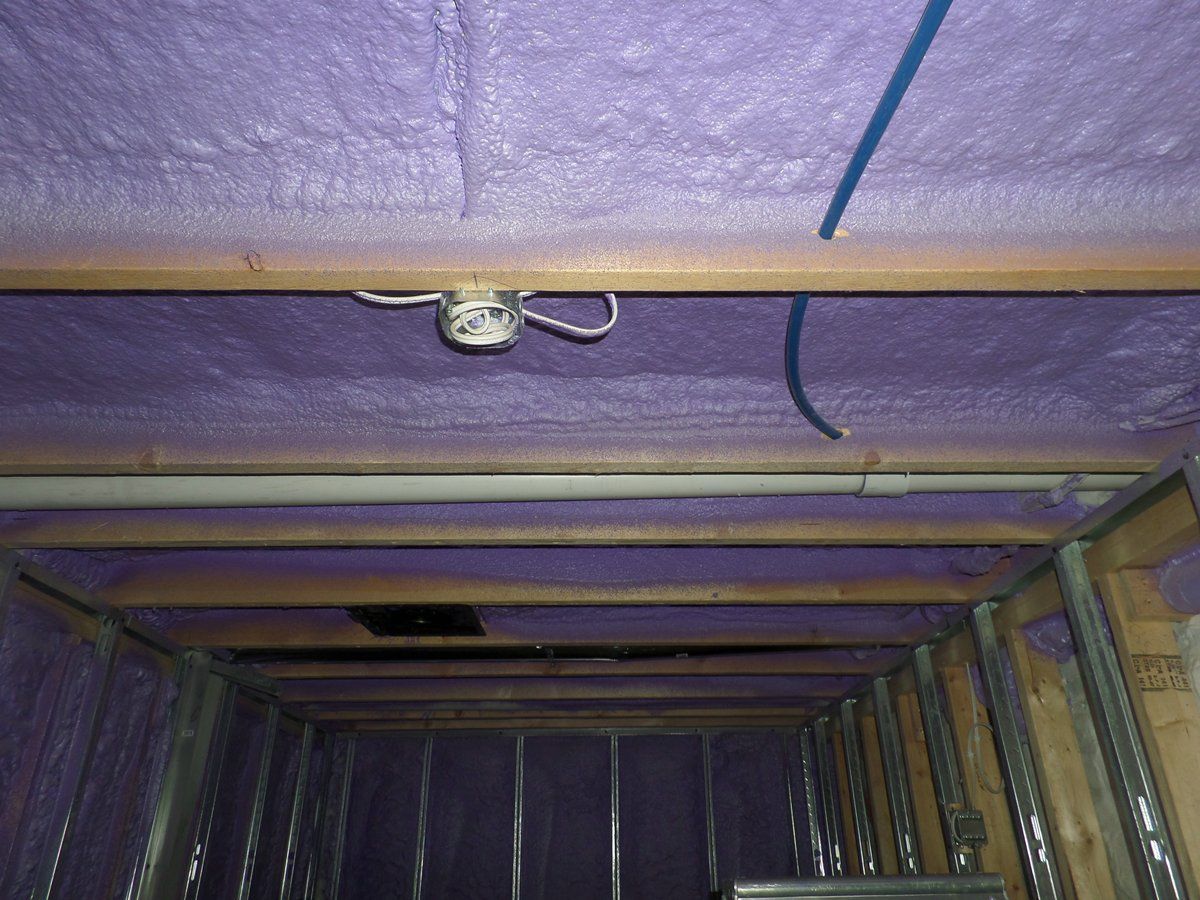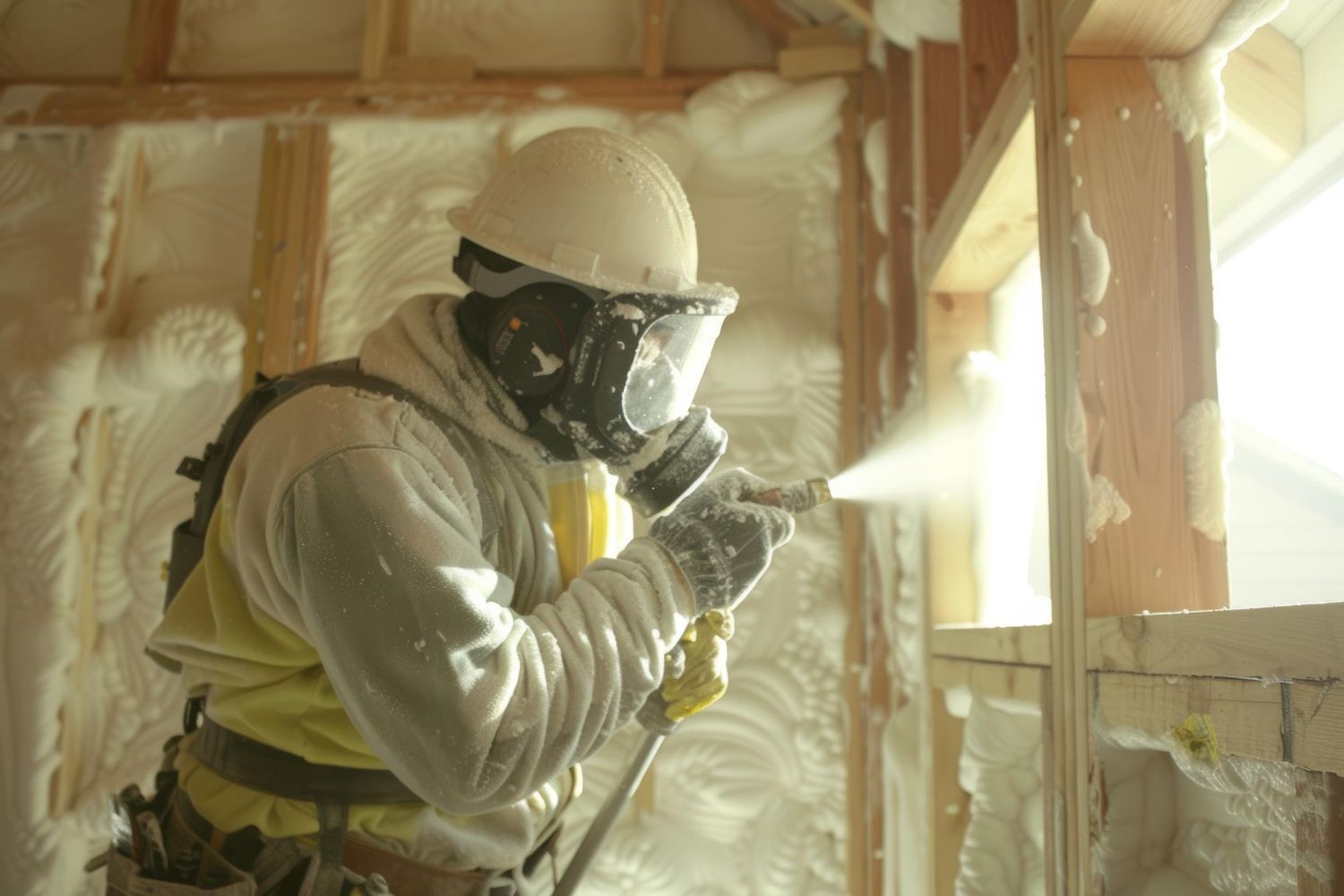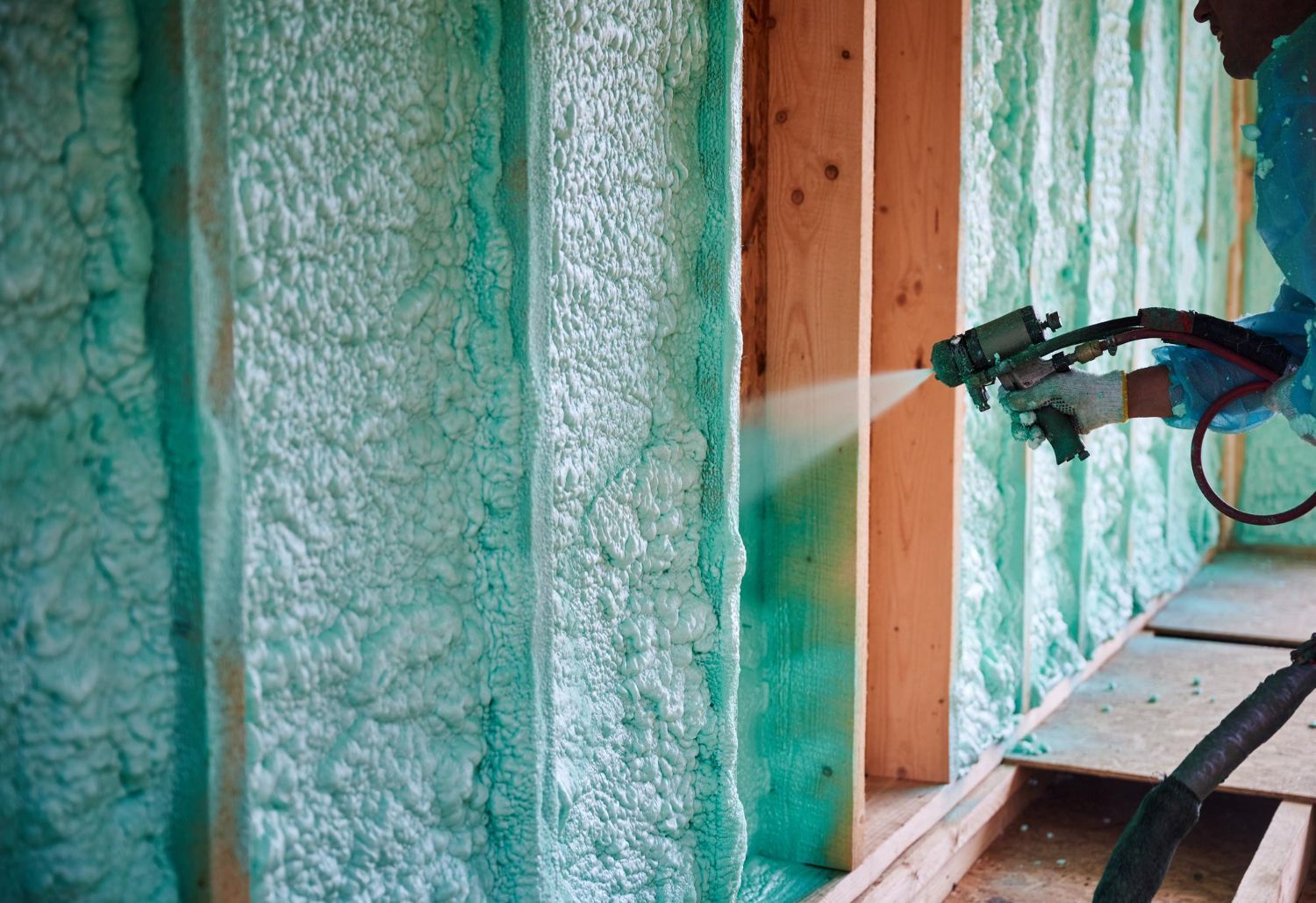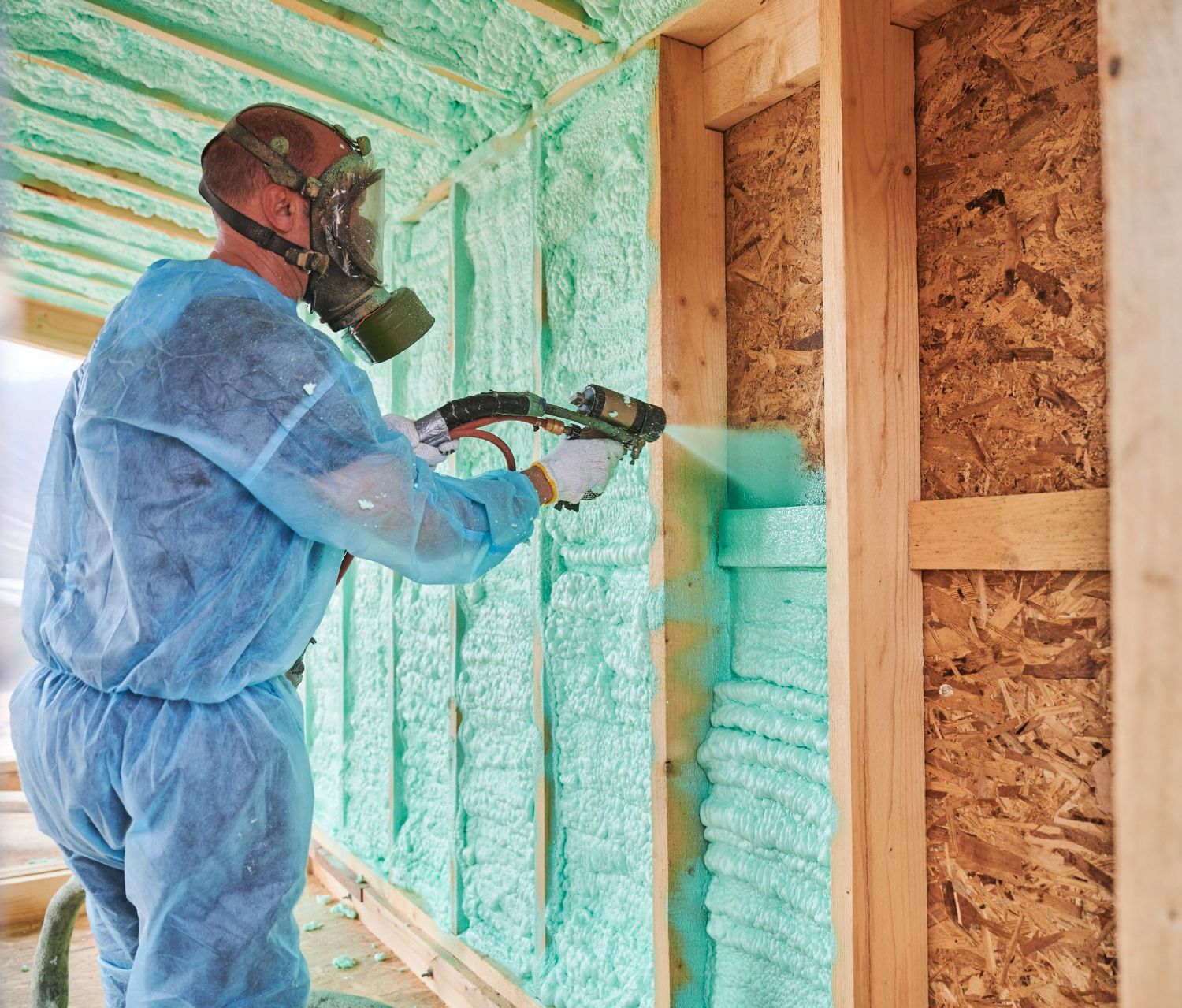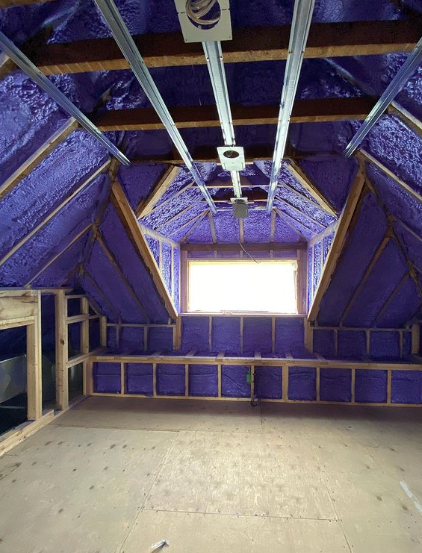Thermal bridging is the
movement of heat across an object that is more conductive than the materials around it
. The conductive material creates a path of least resistance for heat. Thermal bridging can be a major source of energy loss in homes and buildings, leading to higher utility bills.
If you look at this flat roof, you can see what appears to be circles of melt in a symmetrical pattern. This melt occurs wherever the heat from the garage is transferring through the steel trusses.
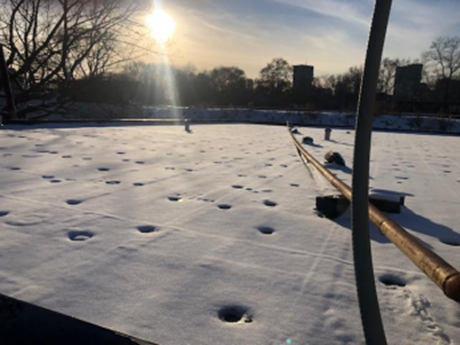
This roof was retrofitted with 2lb closed cell foam insulation (BASF Walltite). It was not possible to get a monolithic barrier in place as the insulation was added many years after the building was constructed and steel trusses were already in place.
This image shows how effective the closed-cell foam insulation is at preventing heat loss. Had there not been any spray foam in place the entire flat roof would be snow-free with only melt/water.
Another example of thermal bridging would be wood framing placed against an exterior wall. Although not as a good a conductor as metal, bridging can still occur. For this reason, we advise that when insulating, leave a small gap behind the framing for a seamless layer of insulation.
Other building areas such as parapets and I-beams can really reduce energy efficiency of a building so they should be spray foamed or insulated in a way that reduces the conductive movement of heat, leading to increased indoor comfort and reduced heating costs.


